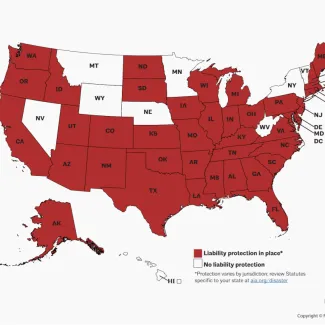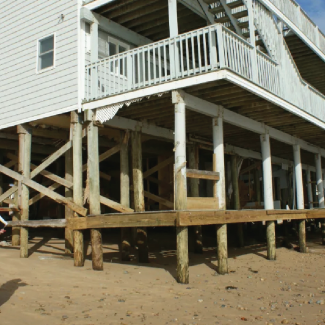Disaster Assistance Program
AIA's Disaster Assistance Program trains architects to help communities mitigate, prepare for, respond to, and recover from disasters, aligning their disaster-response processes, protocols, and training with federal frameworks.

Enhancing disaster preparedness
Since 1972, the Disaster Assistance Program has prepared AIA chapters and members to take on leadership and volunteer roles in assisting communities nationally and internationally. Our work strengthens chapter and individual readiness and fosters mutually beneficial relationships with jurisdictions and the larger disaster-response community.
Join the program’s nationwide network of architects to:
- Provide technical expertise to make sound development decisions and inform local and regional planning and policy efforts.
- Participate in building code development, enforcement, and permitting.
- Train for and share lessons learned from post-disaster building safety assessments.
- Coordinate with local agencies such as offices of emergency management and planning as well as building departments.
- Advocate for Good Samaritan legislation that provides liability protection for design professionals volunteering post-disaster and portability of licensure laws that facilitate out-of-state assistance.
Share your interests and expertise in sustainability, hazard mitigation, resilience, and climate adaptation by becoming part of the Resilience Network. We look forward to hearing from you!

The Disaster Assistance Handbook helps architects support communities before and after disaster—creating more resilient, sustainable, equitable, and healthy places and spaces.

AIA’s Resilient Project Process Guide helps architects and designers integrate resilient and climate-adaptive solutions into their design process.

Good Samaritan laws afford liability protection to architects providing disaster assistance. This resource explores the advantages of such laws, details state protections for architects, and includes


